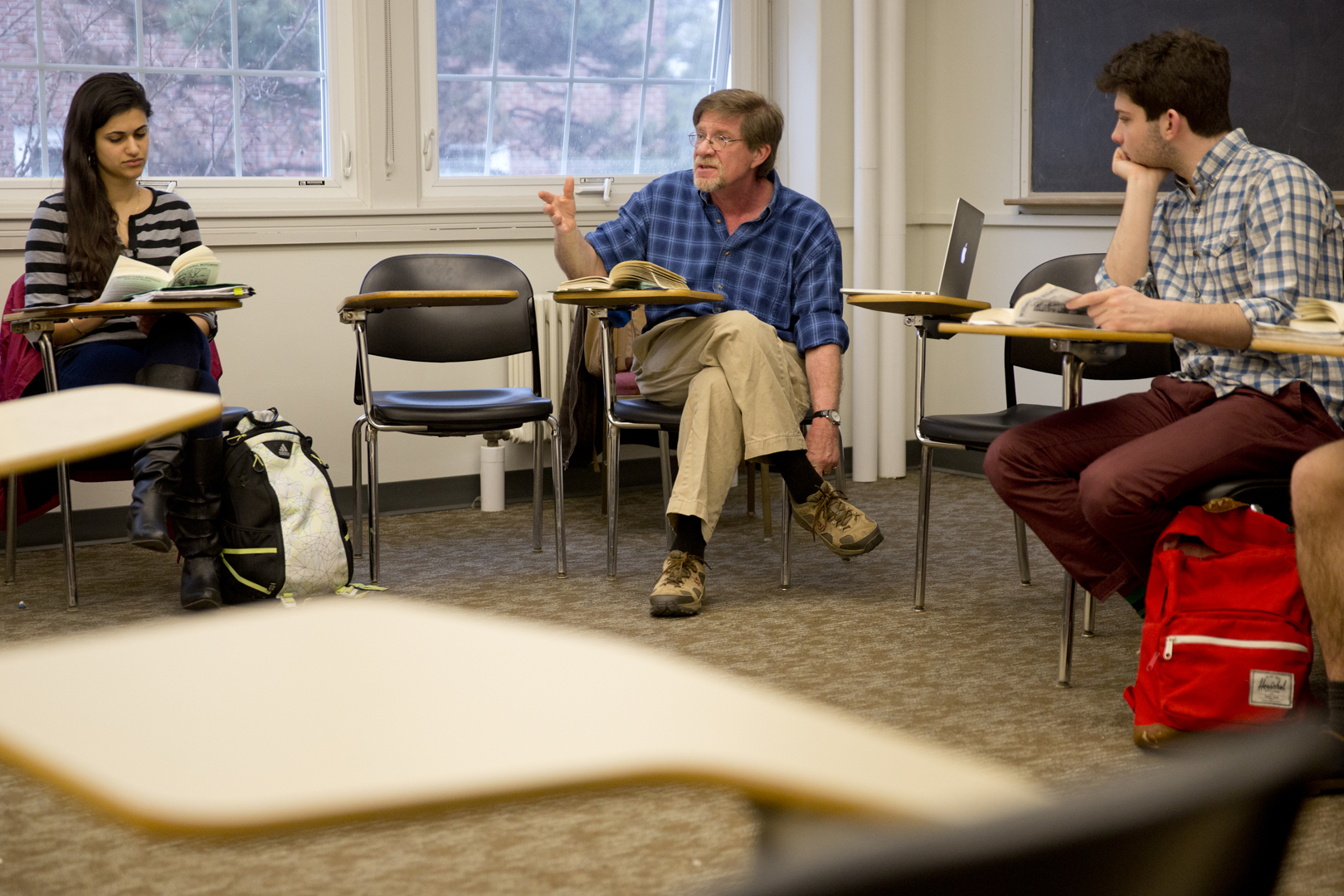
In 2015, poet Rob Farnsworth, then a senior lecturer in English and now retired, agreed to read his poem “Toward Hallowe’en,” which we recorded and illustrated with fall campus photography to create an audio slideshow.

Timely for evoking autumn colors, and timeless for its existential wit, the poem recounts a moment of awe at the sight of a maple tree suddenly let go its red leaves. Awed by the sight, the poet describes what comes next: a feeling of acute and inexplicable joy.
It’s the joy of being released — from having to suss out what just happened (or what might), “from having to stitch effect to cause,” says the poet.
The joy of just watching the leaves fall.
Toward Hallowe’en
I woke in painted stillness and stepped
out on the porch. The silted altitudes were
motionless, and although it hadn’t rained,
the light was melancholy, damp, made
for still black boughs and brilliant leaves.
One of those days that deserves its very
own name: Latin for air-without-motive,
autumn-holding-steady. I stared into
the trees, as a child looks into a picture
said to contain a tiger’s smile, a five-
pointed star, a domino, a hand — when with
a sound like distant applause (fainter
than the softball crowds who had rejoiced
all summer beyond the trees), one whole
maple’s wild red leaves poured down
across the street. No wind, no bird, no
squirrel, just a steady shower of leaves
from a stolid tree, so sudden and unanimous
it seemed deliberate. Standing there,
my arms embossed with bedding wrinkles,
I was pierced with recognition acute
and inexplicable as the sweet, focused
ache a finger held inches from my forehead
provokes. I didn’t know why — but that
was joy — release from having to stitch
effect to cause, from having to name each
five-fingered leaf or separate day. They
would fall away in good time, from places
in a picture of the past, into a hushed,
mysterious storm of bright red leaves.
“Toward Hallowe’en” first appeared in Robert Farnsworth’s book Honest Water, published by Wesleyan University Press in 1989. Farnsworth is a senior lecturer emeritus in English at Bates.

